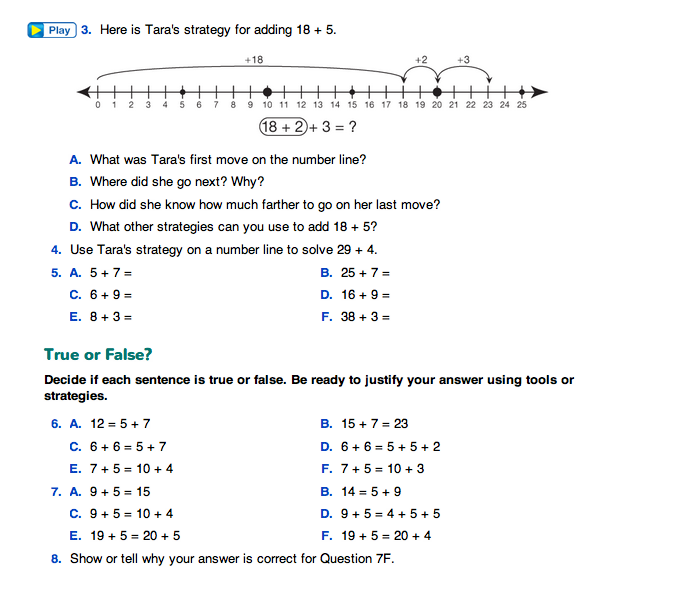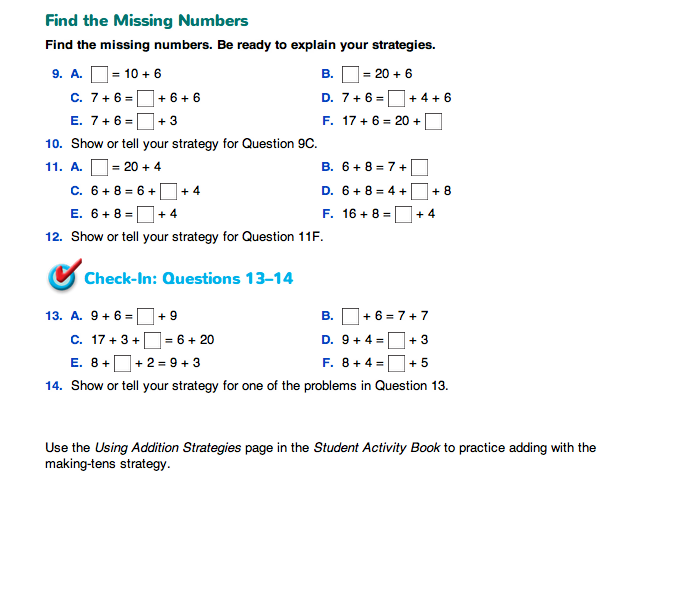Addition Strategies
Est. Class Sessions: 2Developing the Lesson
Part 2. Understand the Equal Sign
True or False? Tell students a number sentence is true if the quantities on both sides of the equal sign have the same value. That is, a number sentence is true if the symbols on both sides of the equal sign represent the same number.
Ask:
Continue to practice with the following number sentences. Encourage students to think of tools or mental strategies they can use to justify their answers.
- A. 10 = 11
- B. 10 = 7 + 3
- C. 5 + 5 = 10
- D. 5 + 5 = 7 + 3
- E. 7 + 3 = 7 + 4
- False
- True
- True
- True
- False
For D and E, students can use number lines or cubes as described above. Alternatively, they can use mental strategies. For D, they can reason that 5 + 5 = 7 + 3 because 5 + 5 = 10 and 7 + 3 = 10, so both sides equal 10. You can model this thinking for students as shown:

For the last sentence (E), students can add both sides to find that the sentence is false. However, they can reason that since 3 is one less than 4, 7 + 3 must be one less than 7 + 4. Therefore, the sentence must be false.
Ask students to work with a partner to decide whether the sentences in Questions 6 and 7 in the Student Guide are true or false. Remind them that they need to be ready to justify their thinking using tools or strategies as in Question 8. As students work, talk with them about their reasoning. See the Content Note for information on students' use of the equal sign and possible misconceptions.
Solve Open Number Sentences. Display the following open number sentences. Ask students to work with a partner to fill in the missing numbers to make each number sentence a true statement. Encourage them to use strategies similar to those they used to decide if the number sentences were true or false. Discuss students' strategies. See the Sample Dialog of a classroom discussion of the last number sentence in the list.
5 + 6 = ![]() + 5
+ 5
5 + 1 = 6 + ![]()
5 + 6 = 10 + ![]()
5 + 5 + ![]() = 5 + 6
= 5 + 6
15 + 6 = ![]() + 5 + 6
+ 5 + 6
Ask students to find the missing number sentences in Question 9. Remind them to be ready to justify their solutions in Question 10.
















